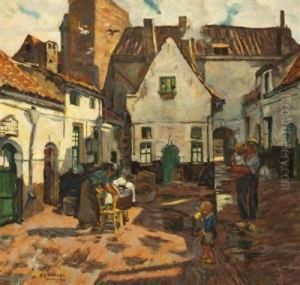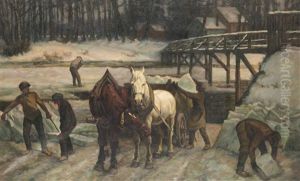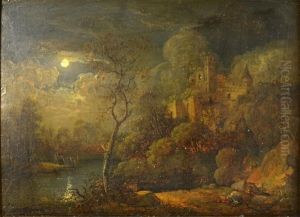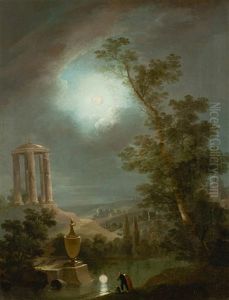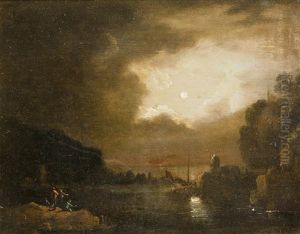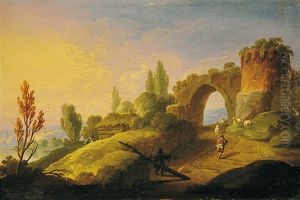Frantisek Xaver Prochazka Paintings
František Xaver Procházka was a Czech artist born on February 5, 1891, in the town of Opočno, which was then part of the Austro-Hungarian Empire and is now in the Czech Republic. Procházka's artistic journey began in his early years, showing an inclination towards drawing and painting from a young age. He pursued his passion for art by studying at the Academy of Fine Arts in Prague, where he was influenced by the Art Nouveau movement and the works of prominent Czech and European artists. His education was a cornerstone in developing his distinctive style, characterized by a blend of realism, symbolism, and elements of Czech folklore.
Procházka's body of work includes a wide range of media, from oil paintings and watercolors to illustrations and graphic art. He was particularly known for his portraits, landscapes, and depictions of rural life, which often reflected a romanticized vision of the Czech countryside. His art not only captured the beauty of his homeland but also its cultural and spiritual essence, contributing to the nationalistic movements in art and literature of his time.
Despite his contributions to Czech art, Procházka's career was relatively short-lived. His life and work were cut short by the political turmoil and the outbreak of World War II. František Xaver Procházka died on September 27, 1940, in Prague, leaving behind a legacy that, though not as widely recognized internationally as some of his contemporaries, holds a significant place in the history of Czech art. His paintings are cherished for their emotional depth, technical skill, and the unique perspective they offer on Czech society and landscape during the early 20th century.

